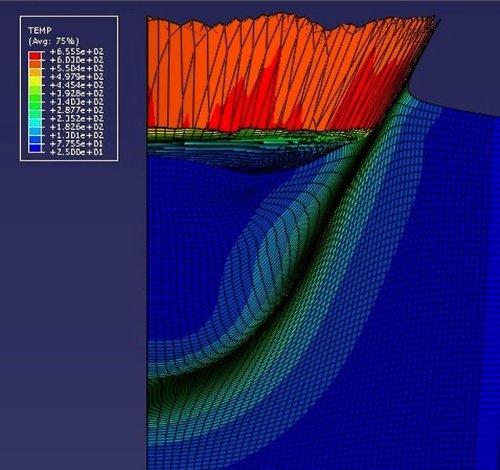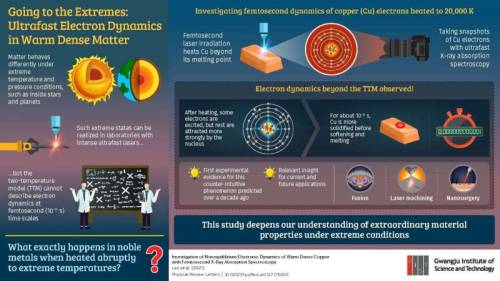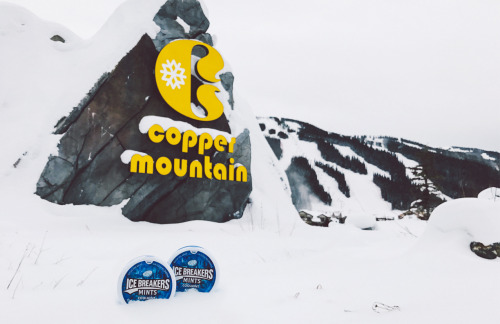#copper
A mysterious insulating phenomenon in a superconductor
Leiden physicist Milan Allan and his group have discovered an apparent paradox within a material that has zero electrical resistance. They report trapped charges, although charges should, in theory, keep flowing in the absence of resistance. The discovery could provide a missing piece of one of the big puzzles in physics today—high-temperature superconductivity. The results are published in Nature Physics.
A material can either be insulating or conductive. In an insulator, an extra electron will get trapped. Thus, no electric current flows in insulators. In a conductor, extra electrons will immediately flow. The more conductive the material is, the faster the electrons will flow.
The research group of Leiden physicist Milan Allan was therefore surprised to discover charge trapping in a material with zero resistance. Charge trapping is supposed to be a telltale sign of an insulator. Together with Leiden theoretical physicist Jan Zaanen, Allan’s group found that the phenomenon could unravel a longstanding mystery about charge transport in a family of materials called cuprates. These poorly understood materials have no resistance, even at relatively high temperatures, and are therefore labeled high-temperature superconductors. The mechanism behind those is one of the big mysteries in physics today.
Post link
Copper ions flow like liquid through crystalline structures
Materials scientists have sussed out the physical phenomenon underlying the promising electrical properties of a class of materials called superionic crystals. A better understanding of such materials could lead to safer and more efficient rechargeable batteries than the current standard-bearer of lithium ion.
Becoming a popular topic of study only within the past five years, superionic crystals are a cross between a liquid and a solid. While some of their molecular components retain a rigid crystalline structure, others become liquid-like above a certain temperature, and are able to flow through the solid scaffold.
In a new study, scientists from Duke University, Oak Ridge National Laboratory (ORNL) and Argonne National Laboratory (ANL) probed one such superionic crystal containing copper, chromium and selenium (CuCrSe2) with neutrons and X-rays to determine how the material’s copper ions achieve their liquid-like properties. The results appear online on Oct. 8 in the journal Nature Physics.
“When CuCrSe2 is heated above 190 degrees Fahrenheit, its copper ions fly around inside the layers of chromium and selenium about as fast as liquid water molecules move,” said Olivier Delaire, associate professor of mechanical engineering and materials science at Duke and senior author on the study. “And yet, it’s still a solid that you could hold in your hand. We wanted to understand the molecular physics behind this phenomenon.”
Post link
Light makes Rice U. catalyst more effective: Halas lab details plasmonic effect that allows catalyst to work at lower energy
Rice University nanoscientists have demonstrated a new catalyst that can convert ammonia into hydrogen fuel at ambient pressure using only light energy, mainly due to a plasmonic effect that makes the catalyst more efficient.
[…]
A study from Rice’s Laboratory for Nanophotonics (LANP) in this week’s issue of Science describes the new catalytic nanoparticles, which are made mostly of copper with trace amounts of ruthenium metal. Tests showed the catalyst benefited from a light-induced electronic process that significantly lowered the “activation barrier,” or minimum energy needed, for the ruthenium to break apart ammonia molecules.
The research comes as governments and industry are investing billions of dollars to develop infrastructure and markets for carbon-free liquid ammonia fuel that will not contribute to greenhouse warming. But the researchers say the plasmonic effect could have implications beyond the “ammonia economy.”
Post link
Laser sintering optimized for printed electronics
Printed electronics use standard printing techniques to manufacture electronic devices on different substrates like glass, plastic films, and paper. Interest in this area is growing because of the potential to create cheaper circuits more efficiently than conventional methods. A new study by researchers at Soonchunhyang University in South Korea, published in AIP Advances, provides insights into the processing of copper nanoparticle ink with green laser light.
Kye-Si Kwon and his colleagues previously worked with silver nanoparticle ink, but they turned to copper (derived from copper oxide) as a possible low-cost alternative. Metallic inks composed of nanoparticles hold an advantage over bulk metals because of their lower melting points. Although the melting point of copper is about 1,083 degrees Celsius in bulk, according to Kwon, copper nanoparticles can be brought to their melting point at just 150 to 500 C—through a process called sintering. Then, they can be merged and bound together.
Kwon’s group concentrates on photonic approaches for heating nanoparticles by the absorption of light. “A laser beam can be focused on a very small area, down to the micrometer level,” explained Kwon and doctorate student Md. Khalilur Rahman. Heat from the laser serves two main purposes: converting copper oxide into copper and promoting the conjoining of copper particles through melting.
Post link
Al 75, Cu 25 (wt%), hypoeutectic alloy
Processing: Sand cast
[…]
Sample preparation: Etched in sodium hydroxide solution
Technique: Reflected light microscopy
Length bar: 40 μm
Further information: The micrograph shows primary Al dendrite arms (white). The dendrite trunk has been intersected at an angle by the plane of polishing to give the observed morphology. Between the dendrites is the Al - CuAl2 eutectic. Initially dendrites would have formed from the liquid, the regions between the dendrite arms known as the mushy zone transforming to a eutectic solid (L to Al + CuAl2). These two phases form cooperatively as neighbouring lamellae with the lateral diffusion of material across the growing interface. The relative amounts of the two phases (Al and CuAl2 ) within the eutectic are determined by applying the Lever Rule at the eutectic temperature.
Contributor: Prof T W Clyne
Organisation: Department of Materials Science and Metallurgy, University of Cambridge
Post link
Improving earthquake resistance with a single crystal
A new heating method for certain metals could lead to improved earthquake-resistant construction materials.
Tohoku University researchers and colleagues have found an economical way to improve the properties of some ’shape memory’ metals, known for their ability to return to their original shape after being deformed. The method could make way for the mass production of these improved metals for a variety of applications, including earthquake-resistant construction materials.
Most metals are made of a large number of crystals but, in some cases, their properties improve when they are formed of a single crystal. However, single-crystal metals are expensive to produce.
Researchers have developed a cheaper production method that takes advantage of a phenomenon known as ‘abnormal grain growth.’ By using this method, a metal’s multiple 'grains’, or crystals, grow irregularly, some at the expense of others, when it is exposed to heat.
The team’s technique involves several cycles of heating and cooling that results in a single-crystal metal bar 70 centimetres in length and 15 millimetres in diameter. This is very large compared to the sizes of current shape memory alloy bars, making it suitable for building and civil engineering applications, says Toshihiro Omori, the lead researcher in the study.
Post link
Alloys: Brass
An alloy of copper and zinc that has been known about since ancient times, brass is stronger and more durable than its base components, though not as strong as steel. It has stuck around for so long because it’s easy to work with, though the malleability depends upon the zinc content, and is used in decorations and applications where low friction is required.
Brass is a substitutional alloy, typically composed of around 67% copper and 33% zinc. Alloys with less zinc are occasionally called red brass while alloys with more zinc (above 45%) are known as white brasses (and are not commonly used industrially). The table below shows some of the common classifications.
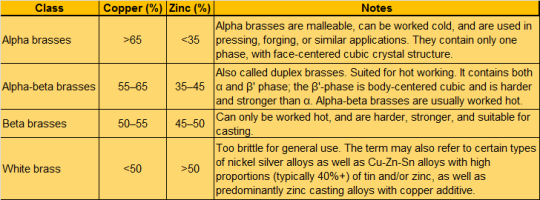
Other elements commonly added to brass include tin, iron, arsenic, antimony, aluminum and potentially small amounts of manganese, silicon, and phosphorus. Lead is also a common additive, though it is becoming less common thanks to growing concerns about its toxicity.
Aside from the properties mentioned above there are many more reasons why brass is a desirable metal. The high copper content makes brass anti-microbial, making it ideal for use in commonly touched items. Brass is also fairly corrosion resistant, allowing it to be used in plumbing. Instruments made of brass are also extremely common thanks to the alloys workability and durability.
Check out this link for a list of common brass alloys and this one for more in depth information on the properties of various alloys.
Image Sources: Top left,top right,middle left,middle right,bottom left,bottom right
Post link
#NSF-funded Engineer Chris Williams heads the effort at Virginia Tech to further advance 3-D printing–known among engineers as additive manufacturing–with copper, a widely used conductor in electronics.
Copper is electrically and thermally conductive, and is found in products across all industries, from our personal electronic devices and computers to satellites and nuclear reactors. As such, there are numerous applications for printed copper, including structural heat exchangers, three-dimensional antennas, and components for rocket engines. If successful, the results gleaned from this project can also be used to educate future engineers in designing systems with 3-D printing.
@vtnews @VTEngineering
Splashdown: Supersonic cold metal bonding in 3-D
When a fragile surface requires a rock-hard, super-thin bonded metal coating, conventional manufacturing processes come up short. However, Cold Gas Dynamic Spray (CGDS) can do just that - with a big caveat. CGDS is enormously versatile, but is also very difficult to predict key aspects of the entire process. Now a temperature-based 3D model by Professor Tien-Chien Jen from the University of Johannesburg starts unlocking the mysteries of the CGDS film-growing process in the particle deposition zone.
Themodel is the first to connect the dots between particle impact velocity, energy transformation, and temperature rise in the particle impact zone, in three dimensions.
CGDS is already used extensively to manufacture or repair metal parts for large passenger airliners, as well as mobile technology and military equipment.
In the process, a de Laval nozzle sprays micron-sized metal particles over a short distance, typically 25mm, at a metal or polymer surface. The particles impact the surface at speeds ranging from 300 meters per second to 800 meters per second. As a frame of reference, the speed of sound is 343 meters per second.
Post link
From these seeds, new touchscreens and solar cells may grow. Duke University chemists are working with copper oxide nanoparticles–each in the pic above is less than a micron wide–to grow copper nanowires. The process could one day allow transparent conductive films made of copper nanowires to supplement or replace the more expensive material now used in touchscreens and photovoltaic solar panels.
“The fact that Cu [copper] is only 6 percent less conductive than the most conductive element, Ag [silver], and yet is 1,000 times more abundant, makes it a particularly attractive element from which to grow nanowires for a diverse range of applications that require high electrical conductivity,” wrote the authors of study published in the journal Small.
When placed in the right solution, the octahedral cuprous oxide (Cu2O) seeds shown above sprout nanowires within minutes. The Duke team’s work is continuing efforts to control the length of nanowire growth to improve their performance in different applications.
Post link
Scientists reveal ultrafast melting dynamics in matter heated to extreme temperatures
Ordinary matter behaves very differently when subjected to extreme temperatures and pressures, such as that inside stellar and planetary cores. Conventional rules of condensed matter physics and plasma physics are not applicable in such scenarios. In particular, an extreme state known as “warm dense matter” (WDM) straddles the boundary of condensed matter physics and plasma physics.
One might think that such states can never be created in a terrestrial setting. But, in fact, short laser pulses that are only femtoseconds (10-15 s, or a quadrillionth of a second) long are intense enough to recreate such conditions in a laboratory. Conventional physical models that describe such states typically assume that electrons become excited by the laser pulse attain equilibrium within tens of femtoseconds while the ions remain “cold.” However, in doing so, the non-equilibrium dynamics of the electrons are completely disregarded.
Post link
My video out later today is on the Rust Dragon from the 3.5 draconomicon. Which I’ve brought over to 5e with these stats. Check out my channel for more videos.
My channel Youtube: https://www.youtube.com/channel/UCPcFsxfrenLv_Nx0oxSmBhA
Post link
Copper isn’t magnetic but creates resistance in the presence of a strong magnetic field









Statue’s sorrow
We’re riding in and riding out on Copper Mountain Dec 16-17. Come watch unicorns #BreakThrough in mid-flight. #TeamUnicorn
Post link

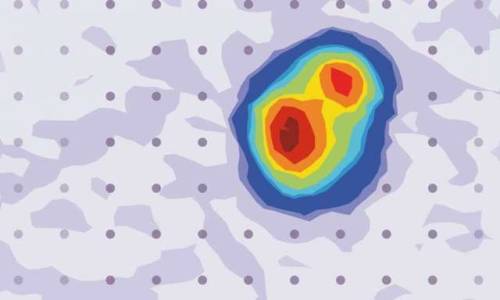



![Al 75, Cu 25 (wt%), hypoeutectic alloy Processing: Sand cast[…]Sample preparation: Etched in Al 75, Cu 25 (wt%), hypoeutectic alloy Processing: Sand cast[…]Sample preparation: Etched in](https://64.media.tumblr.com/79ecb73957bcb39176b5d6c751534161/tumblr_ovkv9cYTp91u00si6o1_500.jpg)








